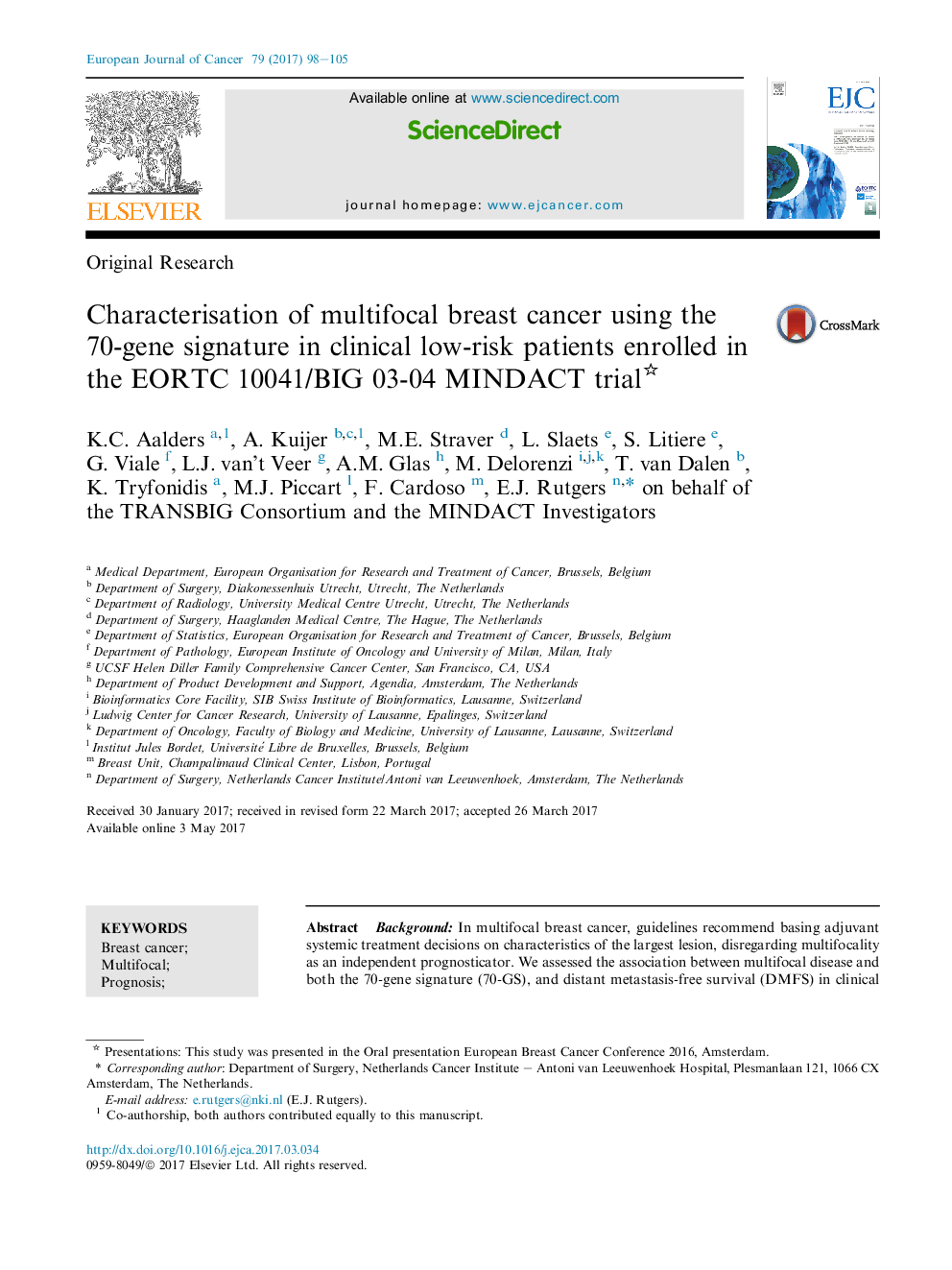| کد مقاله | کد نشریه | سال انتشار | مقاله انگلیسی | نسخه تمام متن |
|---|---|---|---|---|
| 5526637 | 1547053 | 2017 | 8 صفحه PDF | دانلود رایگان |

- Chemotherapy decisions in multifocal disease are based on characteristics of the largest lesion.
- Lobular tumour histology is more common in multifocal disease as compared to unifocal disease.
- Patients with multifocal tumours were more likely at high genomic risk according to the 70-gene signature.
- The overall 5-year distant metastasis-free survival in these clinical low-risk patients was very good regardless of tumour focality.
BackgroundIn multifocal breast cancer, guidelines recommend basing adjuvant systemic treatment decisions on characteristics of the largest lesion, disregarding multifocality as an independent prognosticator. We assessed the association between multifocal disease and both the 70-gene signature (70-GS), and distant metastasis-free survival (DMFS) in clinical low-risk breast cancer patients enrolled in the European Organisation for Research and Treatment of Cancer 10041/BIG 03-04 Microarray In Node-negative and 1 to 3 positive lymph node Disease may Avoid ChemoTherapy (MINDACT) trial.Patients and methodsThe analysed population consisted of enrolled patients in the MINDACT trial with clinical low-risk disease, defined by a modified Adjuvant! Online cut-off for the 10-year risk of recurrent disease or death. Eligibility criteria of MINDACT dictate that patients with multifocal disease could be included if the different lesions had similar pathological characteristics. The presence of multifocal disease was deducted from the case report form (CRF)-question for sum of diameter for all invasive tumour foci. Clinicopathological characteristics and gene expression of patients with unifocal and multifocal (largest lesion) disease were compared. Subsequently, the association between multifocal disease and the 70-GS was evaluated as well as the association between multifocality and 5-year DMFS.ResultsThe study included 3090 clinical low-risk patients with unifocal and 238 patients with multifocal disease. Apart from a higher prevalence of lobular tumours (21.8% versus 10.8%, by local pathology), we did not observe differences in baseline characteristics between multifocal and unifocal tumours. Patients with multifocal tumours were more likely to be at high genomic risk as compared to patients with unifocal tumours (22.7% versus 17.3%, odds ratio [OR] 1.45, 95% confidence interval [CI] 1.02-2.07, P = 0.038). We did not find a significant association between tumour focality and DMFS (97.1% for unifocal versus 96.9% for multifocal, hazard ratio [HR] = 1.55, 95% CI 0.68-3.46, P = 0.172), nor a signal for a potential interaction between the prognostic effect of the 70-GS and focality of the tumour regarding DMFS.ConclusionIn the group of clinical low-risk MINDACT patients, multifocal tumours were more likely to have a high-risk 70-GS profile compared to unifocal tumours. We did not observe a significant interaction between multifocality and the 70-GS with respect to survival without distant metastasis in these patients.
Journal: European Journal of Cancer - Volume 79, July 2017, Pages 98-105